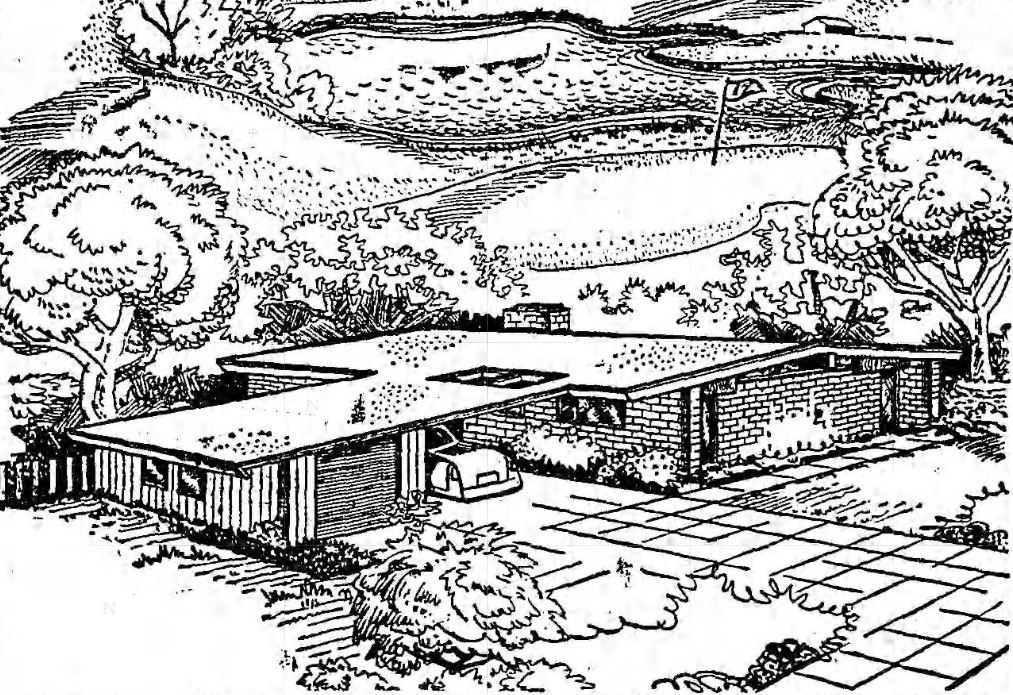
Honeysuckle Lane. It sounds too good to be true, too mid-century-modern-suburban, like Desperate Housewives’ Wisteria Lane or a David Lynch dream. But it did exist in the imagination of two Southern California brother developers, two famous MCM architects, and it still does exist today. And it promised a new kind of building that would never rot, catch fire, or succumb to earthquakes. A building like that could only go by one name: The Forever House.
1948: Development Begins
The United States was settling into the idea of peace and prosperity. Just three years prior–just the blink of an eye–Japanese delegates stood on the deck of the battleship USS Missouri and surrendered to General MacArthur. The war was now over. Time to get home and pick up on life again.
Southern California boomed in the post-war years. Still fueled by war industry money, the Los Angeles area prospered, and people needed places to live. Every morning, a reader of the Los Angeles Times or Herald-Examiner could sip coffee while viewing big quarter-page ads for new housing developments.
A new type of house was being built in Whittier, near Los Angeles. With design help from famed Southern California architects A. Quincy Jones and Frederick Emmons, two brothers who were partners in a building and development operation, the Hughes, began with a 100 acre sub-division of these miracle homes just off of the Santa Ana Freeway.
They would eventually be called The Forever House, and that one building material that had been the staple of homes for thousands of years would be curiously absent: wood.
1948-1952: Weaving Homes from Steel and Concrete
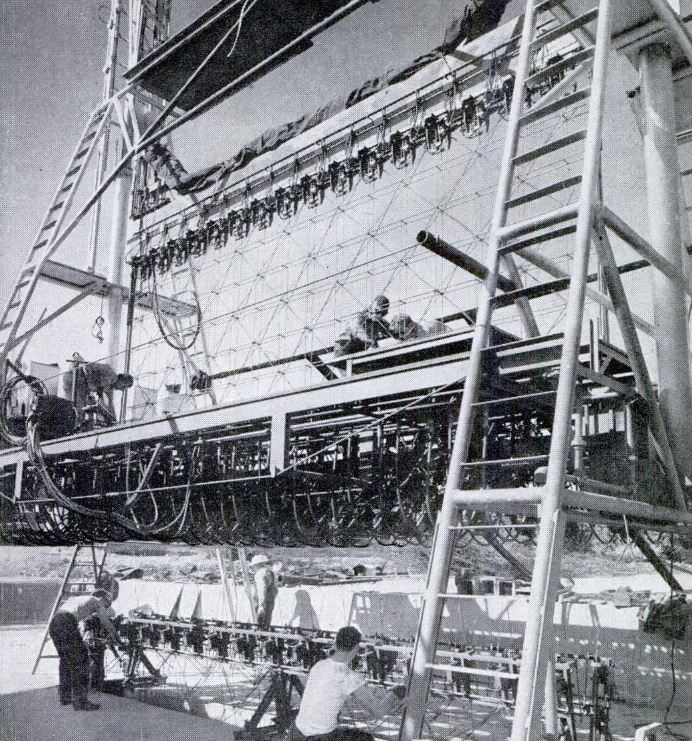
The Hughes’ idea was that since pre-stressed concrete was already used to build many things–bridges, retaining walls–it could be used to build houses, too.
Engineers first created, from scratch, machines that would turn long, straight lengths of “pencil steel” into the diagonals that would then become the woven steel panels or mattresses that form the core of this building process.
These machines were transported to the site, so that the entire process would happen there–not in a factory.
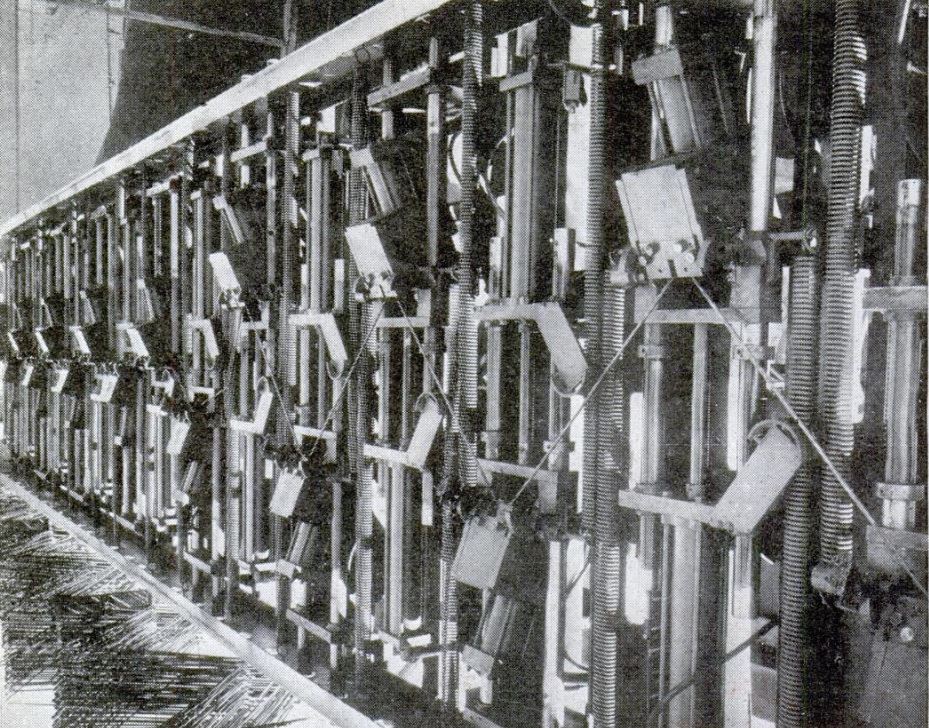
After a panel had been created, they were hoisted into place, both walls and roofs, and plywood forms put in place and moistening. Then, much like the building of a swimming pool, an operator “shot” gunite, or shotcrete, against the plywood, amassing about two inches of gunite.
The operator would let that 2-inch layer dry before coming back to it and layer by layer filling in the entire woven steel lattice. After the panel was filled, it would be covered by a 1/8″ thick hand-applied finish layer.
1953: Selling Begins
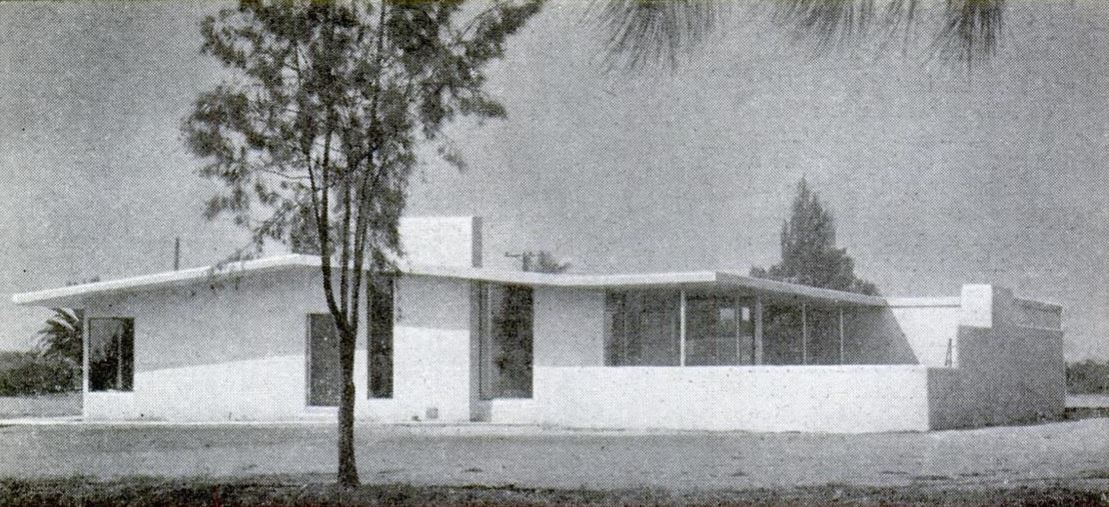
In the spring of 1953, the ads went up for 136 homes that were “precision engineered of steel, aluminum, glass, & masonry.” Because of this, they would be termite proof, fire proof, rot proof, earthquake proof, and just to make sure that all bases had been covered, “deterioration proof.”
Another big selling point of the time was the nearby new $2,000,000 Clock Country Club and golf course.
Common to housing ads of the time, World War II vets could put down a smaller down payment ($450) than non-vets ($2,500).
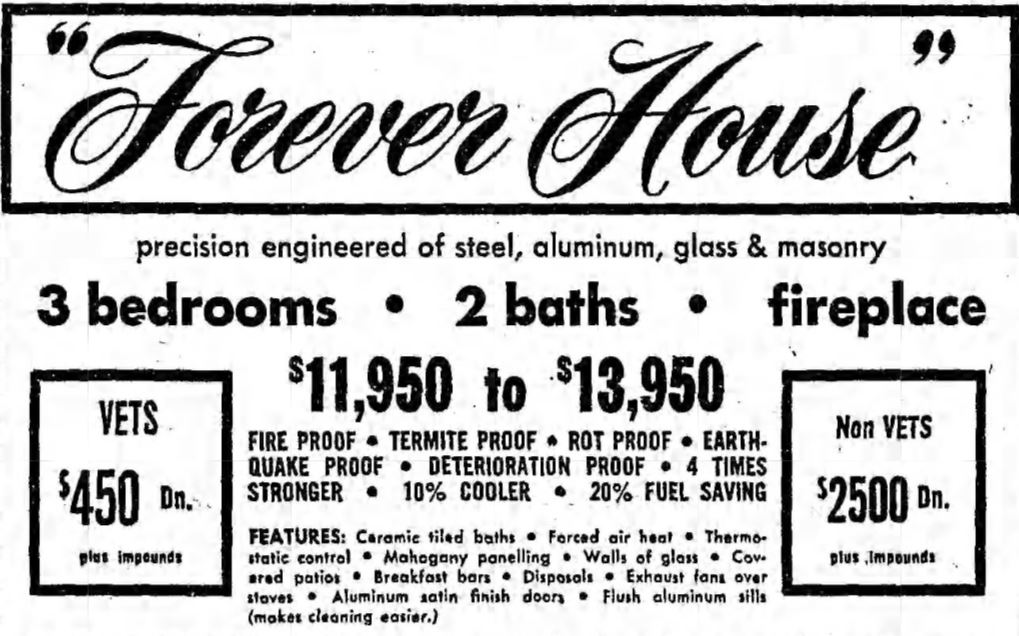
Curiously enough (and perhaps wisely so), not much else was made of Hugheston Meadows’ radically different building process. A May 1953 article in the Los Angeles Times only says that the homes had recently received an award from the National Association of Home Builders.
By May, sales agent James B. Hickey reported that Hugheston Meadows was already 50% sold out.
Today
Hugheston Meadows’ history is largely forgotten, literally off the map when the City of Whittier lists its four historic districts.
Many of Hugheston Meadows’ homes still exist and can be viewed by driving down Honeysuckle, Starlight, Sunnybrook, Breckinridge, or Viburnum Lanes in that circle of homes bound by the golf course.
The country club is now called Candlewood Country Club.
Interestingly enough, the Honolulu Advertiser, October 1952, relayed a story from The Daily People’s World, a Communist newspaper, that future U.S. President Richard Nixon (then a senator) lived in Hugheston Meadows, “a subdivision where Negroes and other non-Caucasians are barred from owning and renting.”
